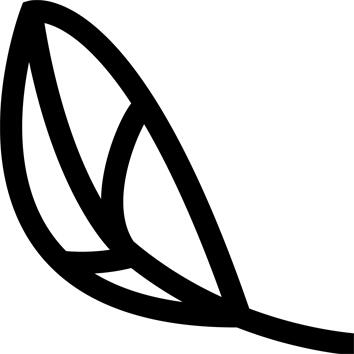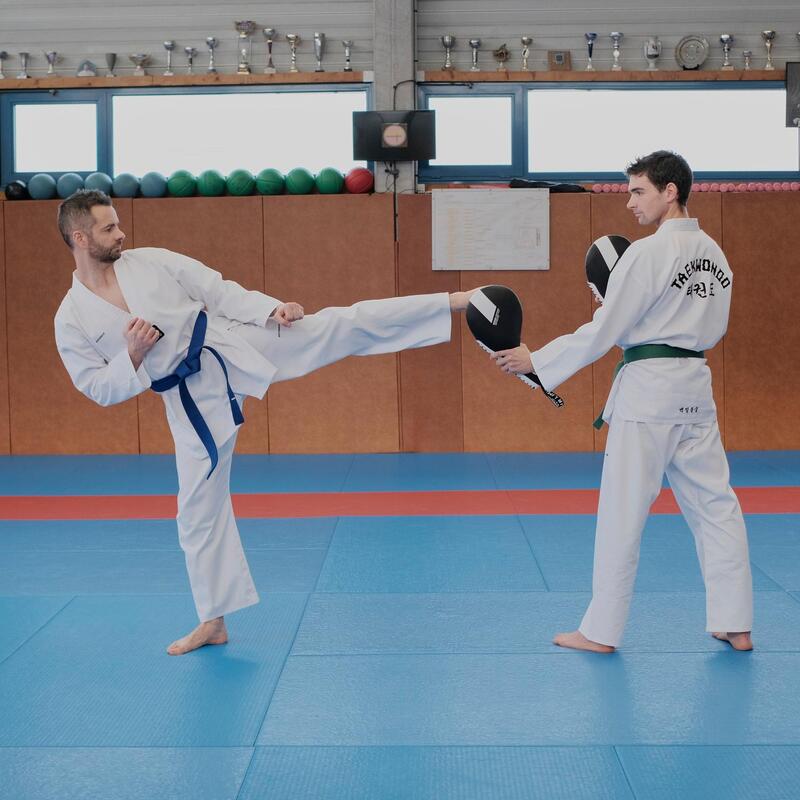A dobok adapted to taekwondo codes and practice.
For visual appeal, we've designed a dobok in keeping with traditional taekwondo aesthetics: the fabric is ribbed, the collar is white and the tunic features classic taekwondo kanjis on the back.
And for your practice? With its taekwondo-specific cut, long sleeves, scalloped tunic and increased freedom of movement - particularly in the legs - your dobok is just as suited to your poomsés as it is to your fights.
Which size to choose?
Here is a guide to help you choose your kimono size:
- 160 cm: XXS-XS / Pants size 34-36
- 170 cm: S-M / Pants size 38-40
- 180 cm: L / Pants size 44
- 190 cm: XL / Pants size 48
- 200 cm: XXL / Pants size 52
More freedom of movement for your legs:
Taekwondo is practiced with the fists, but also and above all with the feet!
So to guarantee you maximum amplitude and freedom of movement, we've designed a pair of pants with a raised crotch.
Result: your pants follow your every move, even the splits!
We present the fabric of this dobok
Taekwondo is a martial art of percussion, based on punches and kicks. So you'll be sweating a lot, and probably a lot too!
So for your dobok, we've chosen a woven fabric that matches the traditional codes of teakwondo. And for added comfort, lightness and resistance, the fabric is 65% cotton and 35% polyester. What's more, it dries faster!
We're proud to present...
...our new taekwondo collection! And to offer you doboks adapted to your practice, our 4-person design team spent a year working on designs, patterns and prototypes. This was followed by many exchanges with our supplier and tests with our in-house staff, all of whom are passionate about taekwondo.
And the result, according to our product manager Enrique? "A dobok we're proud to wear."
Enrique, product manager at Outshock, explains how the doboks are designed:
"Martial arts have many aesthetic codes. For taekwondo, we used these codes to make improvements. A bit like touching up with a paintbrush. We have a community of taekwondo teachers and competitors in Spain: we asked them questions about their needs. It was a great collaboration. That's the great thing about martial arts: you light a lot of fuses and people share their passion."











